Training your spine is a important part of growing and trimming your back. Whether you are a workout enthusiast or creating your first training plan, the workouts below will help you meet your fitness goals.
upward facing dog
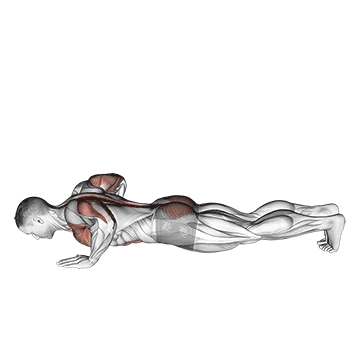
1. Start by lying flat on your stomach on a comfortable, flat surface. Extend your legs behind you, tops of the feet resting on the floor.
2. Place your hands on the floor beside your waist so that your palms are down and your fingers are pointing towards the front of the mat.
3. Press your palms firmly into the floor, straighten your arms, and lift your torso up and off the floor. Keep your thighs firm and slightly turned inward, the tops of your feet pressing firmly into the floor.
4. Draw your shoulder blades into your upper back ribs and down towards your tailbone. Broaden across your collarbones.
5. Lift through the top of your sternum but avoid pushing the front of your ribs forward. Look straight ahead or tip the head back slightly, but take care not to compress the back of the neck and harden or puff out the lower back.
6. Hold for 15-30 seconds, breathing easily. Release back to the floor or lift into a Downward Facing Dog, with an exhalation.
Remember, this exercise should be avoided if you have a back injury. Always consult with a professional if you're unsure about the form or execution of the exercise.
two toe touch (male)
_360.gif)
1. Stand upright with your feet hip-width apart. This is your starting position.
2. Lift your right arm straight up above your head, while simultaneously lifting your left leg off the ground. Keep your left leg straight and try to touch your right hand to your left foot.
3. Return to the starting position and repeat the movement with your left arm and right leg. This completes one repetition.
4. Keep your spine straight and your core engaged throughout the exercise. Avoid bending your back or neck to reach your foot. The movement should come from your hip joint.
5. Perform this exercise for the desired number of repetitions.
Remember, the goal is not to touch your toes at all costs, but to stretch your spine and improve your balance. If you can't reach your foot, just go as far as you can while maintaining good form. As your flexibility improves, you'll be able to reach further.
standing pelvic tilt
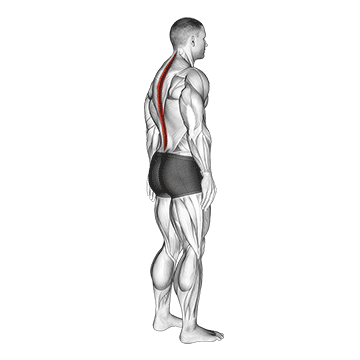
1. Stand upright with your feet hip-width apart. Your toes should be pointing forward and your arms should be relaxed at your sides.
2. Engage your core muscles by pulling your belly button in towards your spine. This will help stabilize your body throughout the exercise.
3. Slowly begin to tilt your pelvis forward. To do this, imagine you're trying to spill water out of a bowl that's resting on your lower abdomen. Your buttocks should tuck under and you should feel a slight stretch in your lower back.
4. Hold this position for a few seconds, then slowly tilt your pelvis back to its original position. This time, imagine you're trying to spill water out of a bowl that's resting on your lower back. Your buttocks should stick out slightly and you should feel a slight stretch in your abdominal muscles.
5. Repeat this exercise for a set number of repetitions, typically between 10 and 15. Remember to keep your movements slow and controlled, and to keep your core engaged throughout the exercise.
6. As you get more comfortable with this exercise, you can increase the number of repetitions or hold each tilt for a longer period of time to increase the challenge.
Remember, this exercise should not cause pain. If you feel any discomfort, stop the exercise and consult with a healthcare professional.
spine stretch
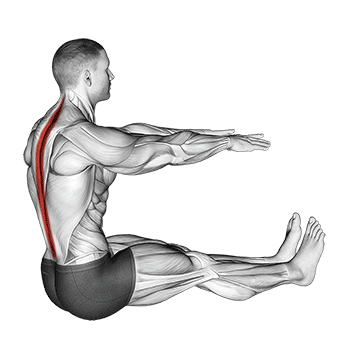
To perform the spine stretch exercise, start by sitting on the floor with your legs extended in front of you, slightly wider than hip-width apart. Keep your feet flexed.
Next, extend your arms out in front of you at shoulder height with your palms facing down. Keep your spine straight and your shoulders relaxed.
Inhale deeply, and as you exhale, begin to round your spine forward from the top of your head, as if you're trying to reach your fingers towards your toes. Imagine each vertebra of your spine stretching and creating space as you fold forward.
Hold this position for a few seconds, feeling the stretch in your spine.
Inhale as you slowly roll back up to the starting position, stacking each vertebra one at a time until you're sitting tall again.
Repeat this exercise for 10-15 repetitions, ensuring to maintain the slow, controlled movement and focusing on the stretch in your spine.
Remember, this exercise should not cause pain. If you feel any discomfort, reduce the intensity of the stretch or stop the exercise.
This exercise is great for improving flexibility and mobility in your spine, and can be done without any equipment, using just your body weight.
sphinx
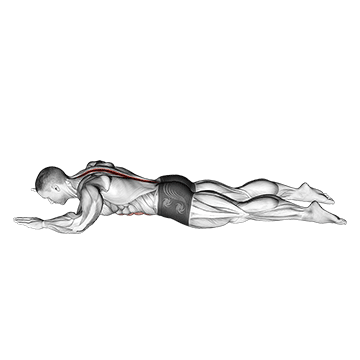
To perform the Sphinx exercise, start by lying flat on your stomach on a comfortable, flat surface. Extend your legs straight behind you, hip-width apart. Your toes should be pointed, and your glutes should be relaxed.
Place your elbows under your shoulders with your forearms on the floor, parallel to each other. Your palms should be facing down. This is your starting position.
Press your forearms into the floor and lift your upper body off the floor, extending your spine and drawing your shoulders back. Keep your neck long and your gaze down or slightly forward.
Ensure that your hips and thighs are in contact with the floor throughout the exercise. You should feel a gentle stretch in your abdominal muscles and lower back.
Hold this position for about 30 seconds to a minute, breathing deeply and evenly.
Slowly lower your upper body back to the floor to return to the starting position.
Repeat this exercise for the desired number of repetitions.
Remember to keep your movements slow and controlled, and avoid straining your neck or back. If you feel any discomfort or pain, stop the exercise immediately and consult with a fitness professional or physical therapist.
lower back curl
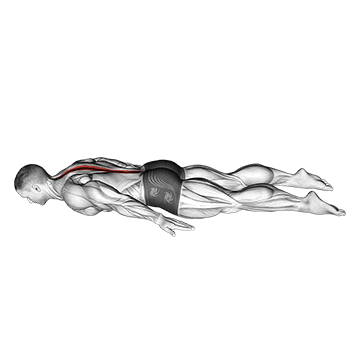
1. Start by lying flat on your stomach on a comfortable, flat surface. Extend your arms straight out in front of you and your legs straight out behind you.
2. Keep your neck in a neutral position by looking straight down at the floor. This is your starting position.
3. Begin the exercise by slowly lifting your upper body off the ground as far as comfortably possible. You should be using your lower back muscles to do this, not your arms. Keep your arms and legs stationary throughout the exercise.
4. Hold the top position for a moment, then slowly lower your upper body back down to the starting position.
5. Repeat this movement for your desired number of repetitions. Be sure to keep your movements slow and controlled, and focus on using your lower back muscles.
6. Remember to breathe throughout the exercise. Inhale as you lift your body, and exhale as you lower it back down.
7. If you feel any pain in your lower back or neck, stop the exercise immediately and consult with a fitness professional.
Note: This exercise should be performed with caution, especially if you have a history of back problems. Always consult with a healthcare provider before starting any new exercise regimen.
hyperextension (on bench)
_Waist_360.gif)
1. Position yourself on the hyperextension bench with your ankles secured under the footpads and your upper thighs resting on the larger pad. Your body should be in a straight line from head to heels.
2. Cross your arms over your chest or place your hands behind your head. This is your starting position.
3. Begin the exercise by bending at the waist while keeping your back straight. Continue lowering your torso until it's almost perpendicular to your legs. Ensure you inhale as you perform this part of the movement.
4. Raise your torso back to the initial position by contracting your lower back muscles. Exhale as you perform this part of the movement.
5. Repeat the movement for the recommended amount of repetitions.
Remember to keep your back straight at all times - do not round your back or shoulders. The focus should be on the lower back muscles, so ensure you're using them to lift your torso, rather than pushing with your legs or pulling with your arms.
hyperextension
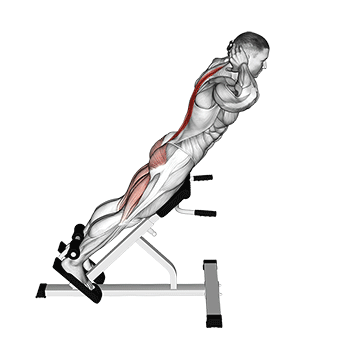
To perform the hyperextension exercise, start by finding a flat, comfortable surface where you can lie down.
1. Lie face down on the floor with your arms extended out in front of you and your legs straight behind you. This is your starting position.
2. Slowly lift your upper body and legs off the ground as high as you comfortably can. Keep your arms and legs straight throughout the movement. This action will cause a hyperextension in your spine, hence the name of the exercise.
3. Hold this position for a few seconds, then slowly lower your body back to the starting position.
4. Repeat this movement for the desired number of repetitions.
Remember to keep your movements slow and controlled, and avoid jerking or using momentum to lift your body. This exercise should be performed using your body weight only, so there's no need for any additional equipment.
Always listen to your body and stop if you feel any discomfort or pain. If you're new to this exercise, start with a small number of repetitions and gradually increase as your strength and flexibility improve.
No tags for this post.
